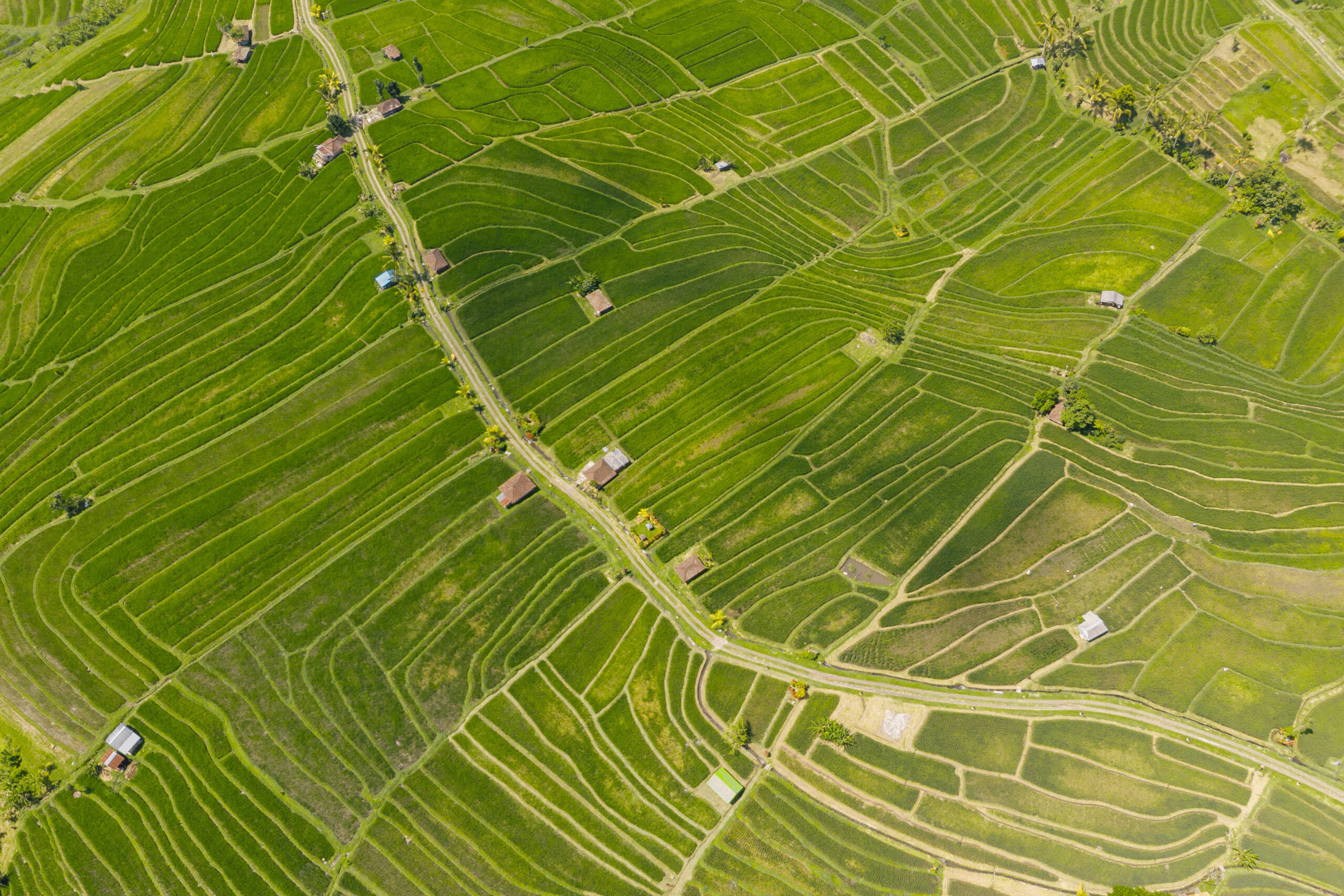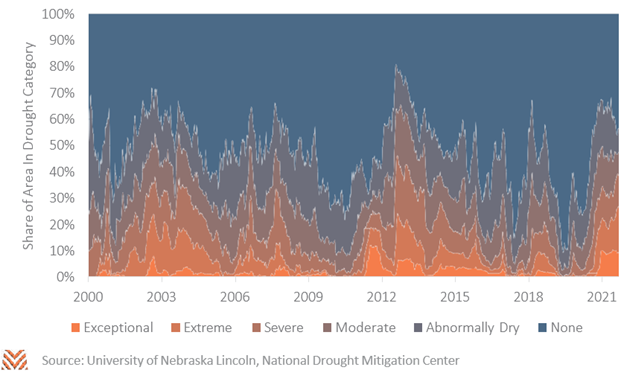Drought

Through 2021, many producers both at home and abroad have been facing persistent drought conditions. This has been especially impactful for commodities that are concentrated in the Northern Plains and the West Coast. The USDA NASS’s spring wheat conditions reports are at record lows, and tree nut production is expected to fall precipitously from the prior year. Droughts are not uncommon in U.S. agriculture and several droughts have been notable, such as the 2002 drought in the southwest and the 2012 Palmer drought in the south. Yet there are several reasons why the 2021 drought is shaping up to be even more impactful than those prior drought years.
The figure below shows the national overall drought condition by showing the share of the country by drought status. The recent drought is more severe than the 2002 drought, with almost 10% of land in exceptional drought conditions. While the 2012 Palmer drought was more severe, it was highly localized to Texas for much of 2012, and its expansion into the Corn Belt in 2013 was less severe. The drought of 2021 is unusual both in the share of regions in exceptional drought, but also how squarely those areas of severe drought fall on major agricultural regions. A quarter of the top 100 largest agricultural counties are currently experiencing exceptional drought conditions. Almost half are experiencing at least severe drought.

In some regions, the current drought period is driving producer conversations about the future of water access. In some cases, water access can be shored up through minor changes, like improving irrigation systems or through the purchase of water rights. But in regions that fear chronic future drought, producers are having conversations about whether they may have to permanently fallow land or purchase additional land almost exclusively for incremental water rights. To date, these conversations are localized in regions with specialty crops that need a lot of water and have limited local water supplies, but they may become more common if drought conditions continue to worsen across the U.S.
Of course, these conditions may also improve, or we could see minimal impacts on producers. In regions with a history of short water supplies, like California, producers have collaborated on local groundwater management associations for over a hundred years. Even if farmers and ranchers see exceptional drought periods, many areas have a long history of addressing water concerns to ensure that production can be maintained. In areas with new water risks, like near the Ogallala aquifer in the southern Plains states, producers have formed new associations designed to meet potential water risks. Drought and water access may become a much larger part of the conversation around U.S. agricultural production, but it appears that producers are willing and able to meet the challenge.










